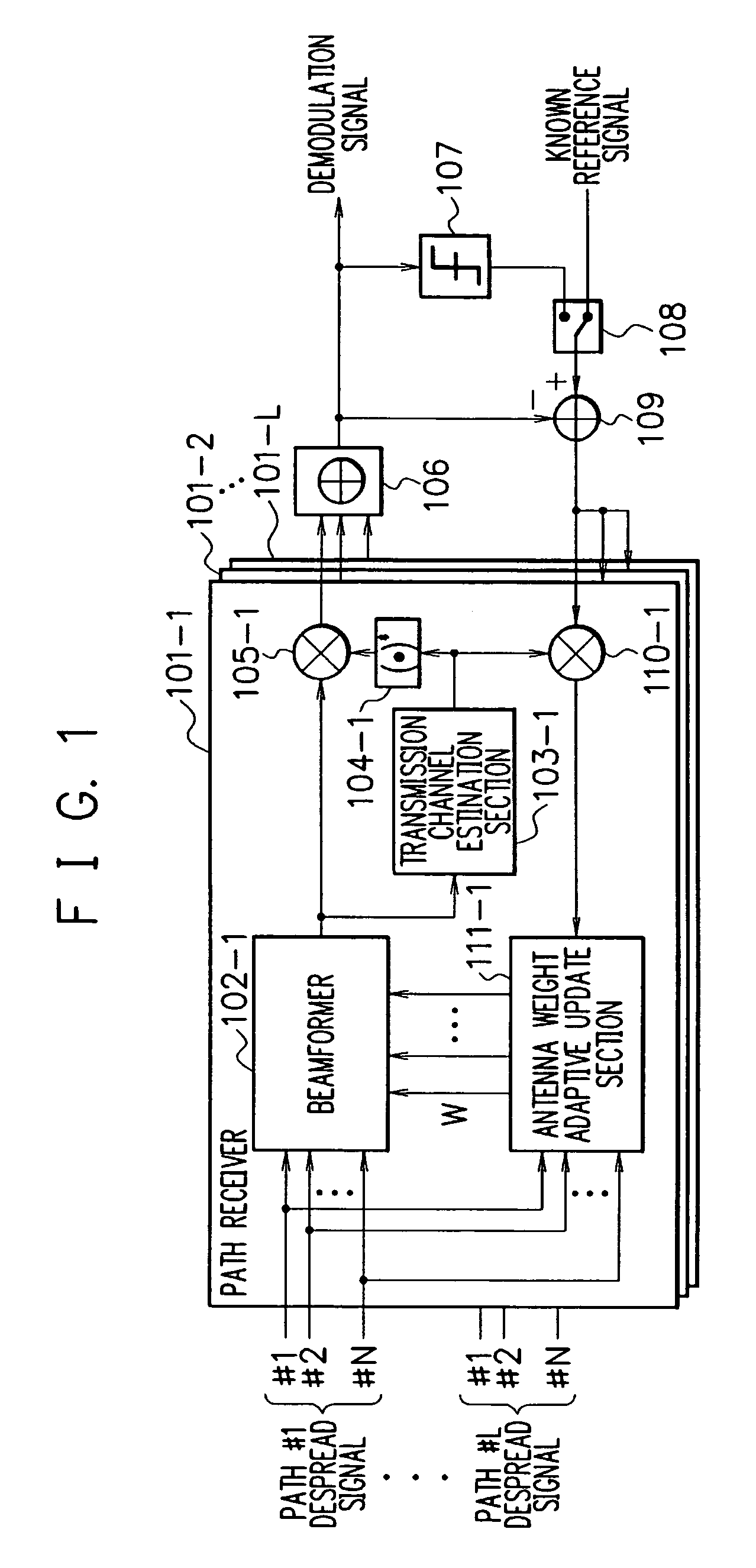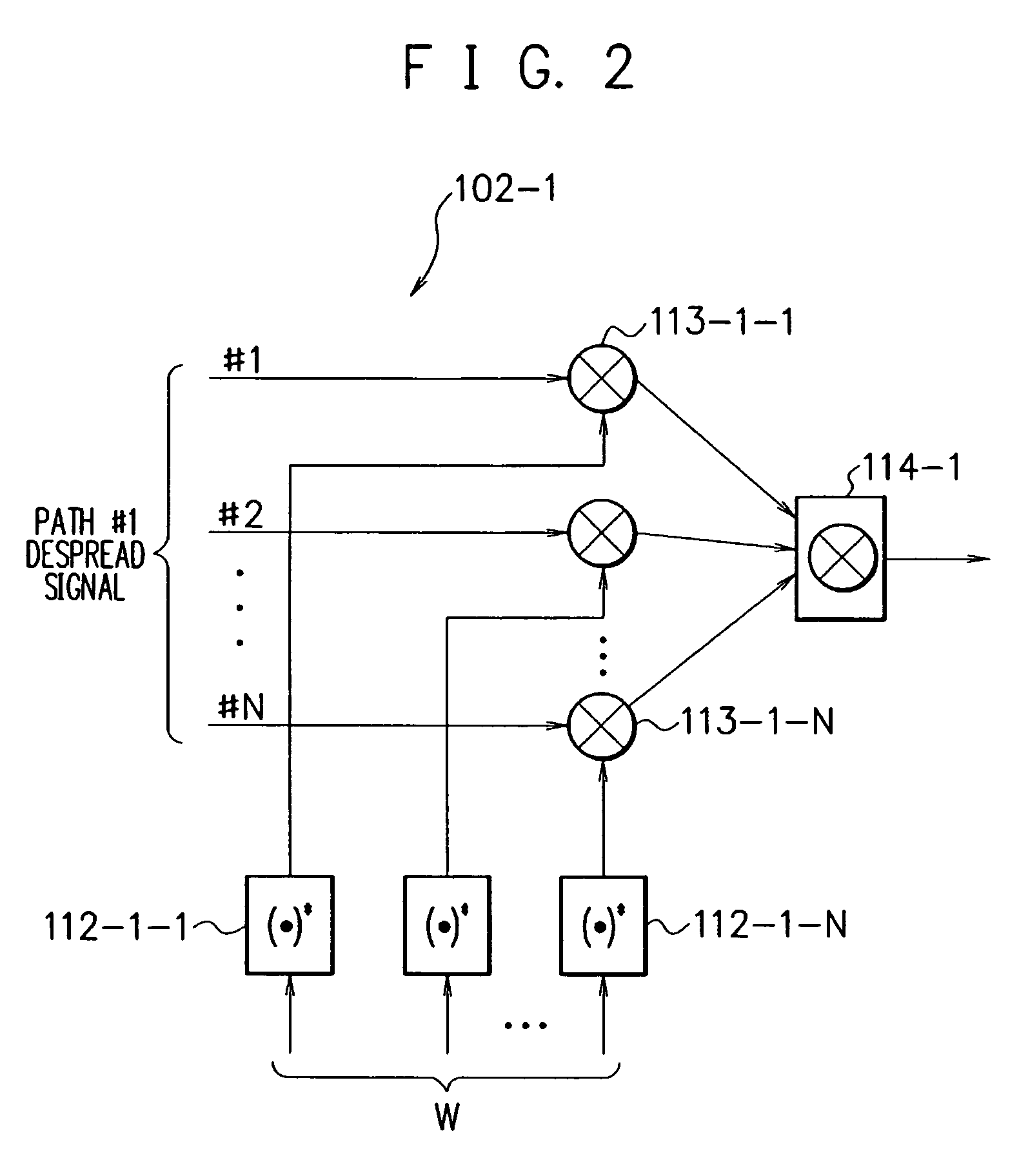Adaptive antenna reception method and device
a technology of antenna reception and receiver, applied in direction finders using radio waves, instruments, multiplex communication, etc., can solve problems such as interference with other signals, and achieve the effects of preventing stepping out, simple construction and operation, and improving the follow-up performance of directional beams
- Summary
- Abstract
- Description
- Claims
- Application Information
AI Technical Summary
Benefits of technology
Problems solved by technology
Method used
Image
Examples
Embodiment Construction
[0060]Referring now to the drawings, a description of a preferred embodiment of the present invention will be given in detail.
[0061]FIG. 4 is a block diagram showing the construction of an adaptive antenna receiver according to an embodiment of the present invention. Referring to FIG. 4, the adaptive antenna receiver comprises path receivers 1-1 to 1-L, a combiner 6, a determination unit 7, a switch 8, and a subtractor 9.
[0062]There are provided L pieces of the path receivers 1-1 to 1-L to perform multipath combining correspondingly to multipath propagation channels in a mobile communication environment. All of the path receivers 1-1 to 1-L have the same construction.
[0063]The path receivers 1-1 includes a beamformer 2-1, a transmission channel estimation section 3-1, a complex conjugate operation section 4-1, multipliers 5-1 and 10-1, an antenna weight adaptive update section 11-1, an antenna weight direction constraint section 12-1, and a direction vector generator 16-1.
[0064]The ...
PUM
 Login to View More
Login to View More Abstract
Description
Claims
Application Information
 Login to View More
Login to View More - R&D
- Intellectual Property
- Life Sciences
- Materials
- Tech Scout
- Unparalleled Data Quality
- Higher Quality Content
- 60% Fewer Hallucinations
Browse by: Latest US Patents, China's latest patents, Technical Efficacy Thesaurus, Application Domain, Technology Topic, Popular Technical Reports.
© 2025 PatSnap. All rights reserved.Legal|Privacy policy|Modern Slavery Act Transparency Statement|Sitemap|About US| Contact US: help@patsnap.com



